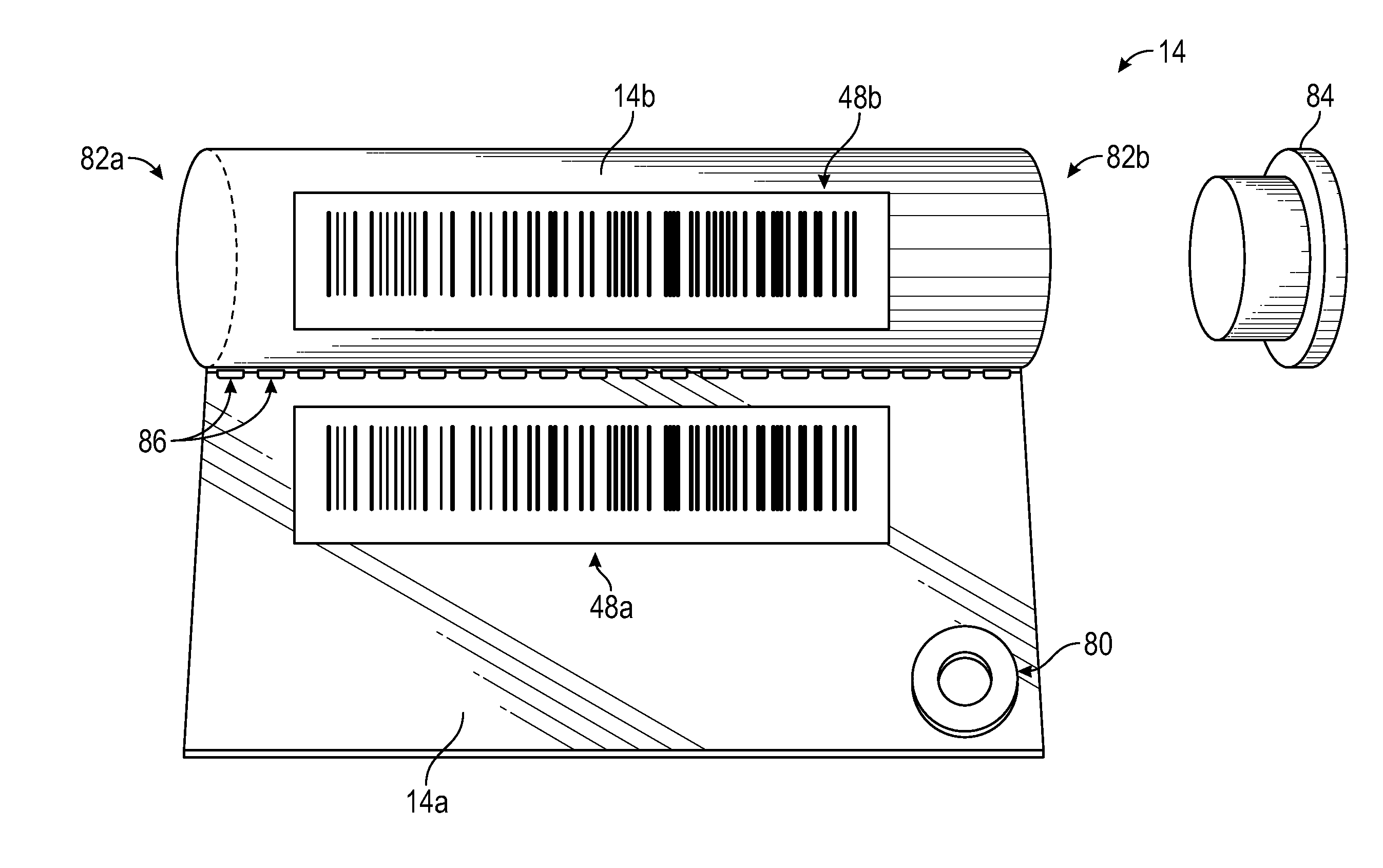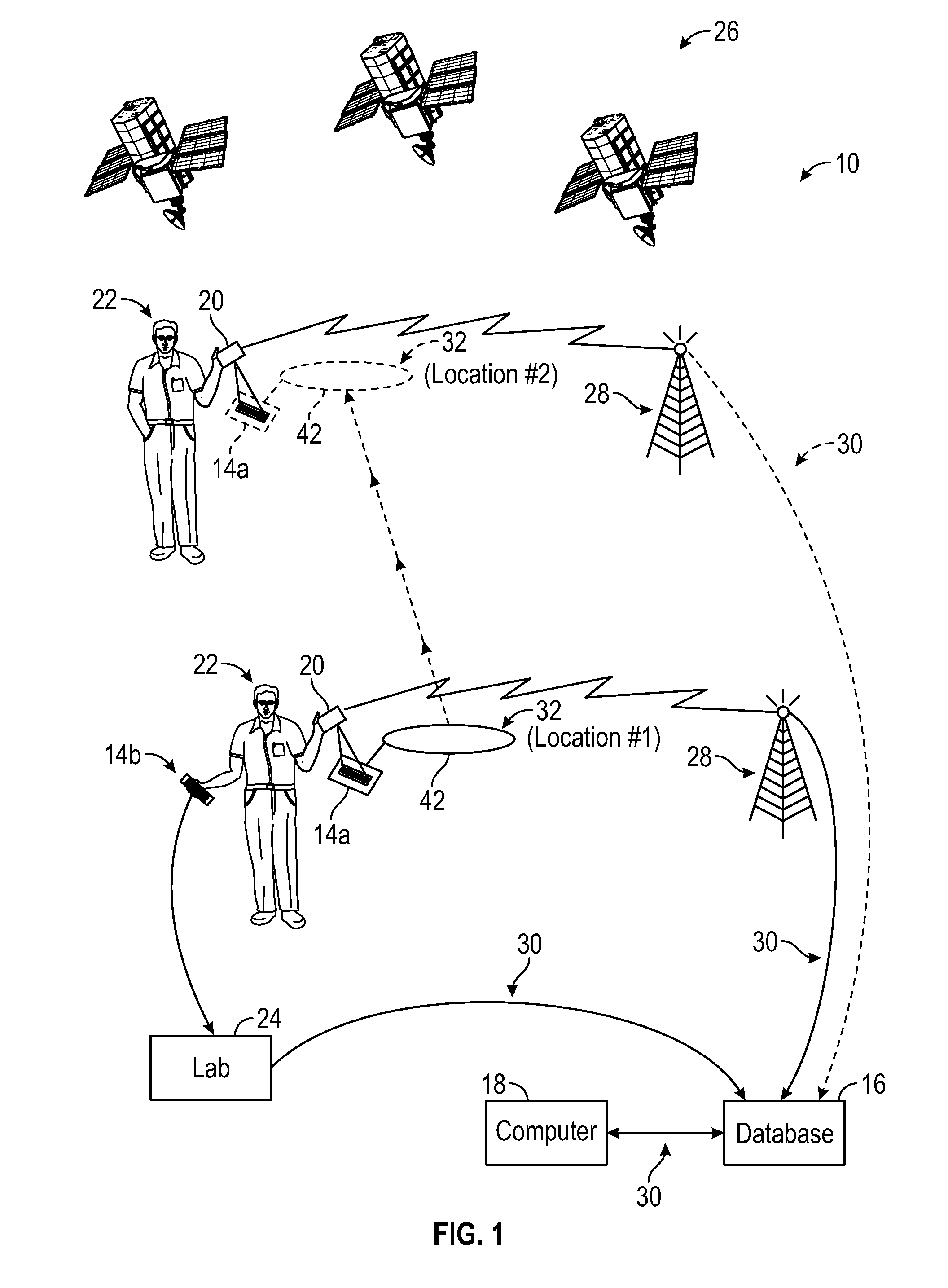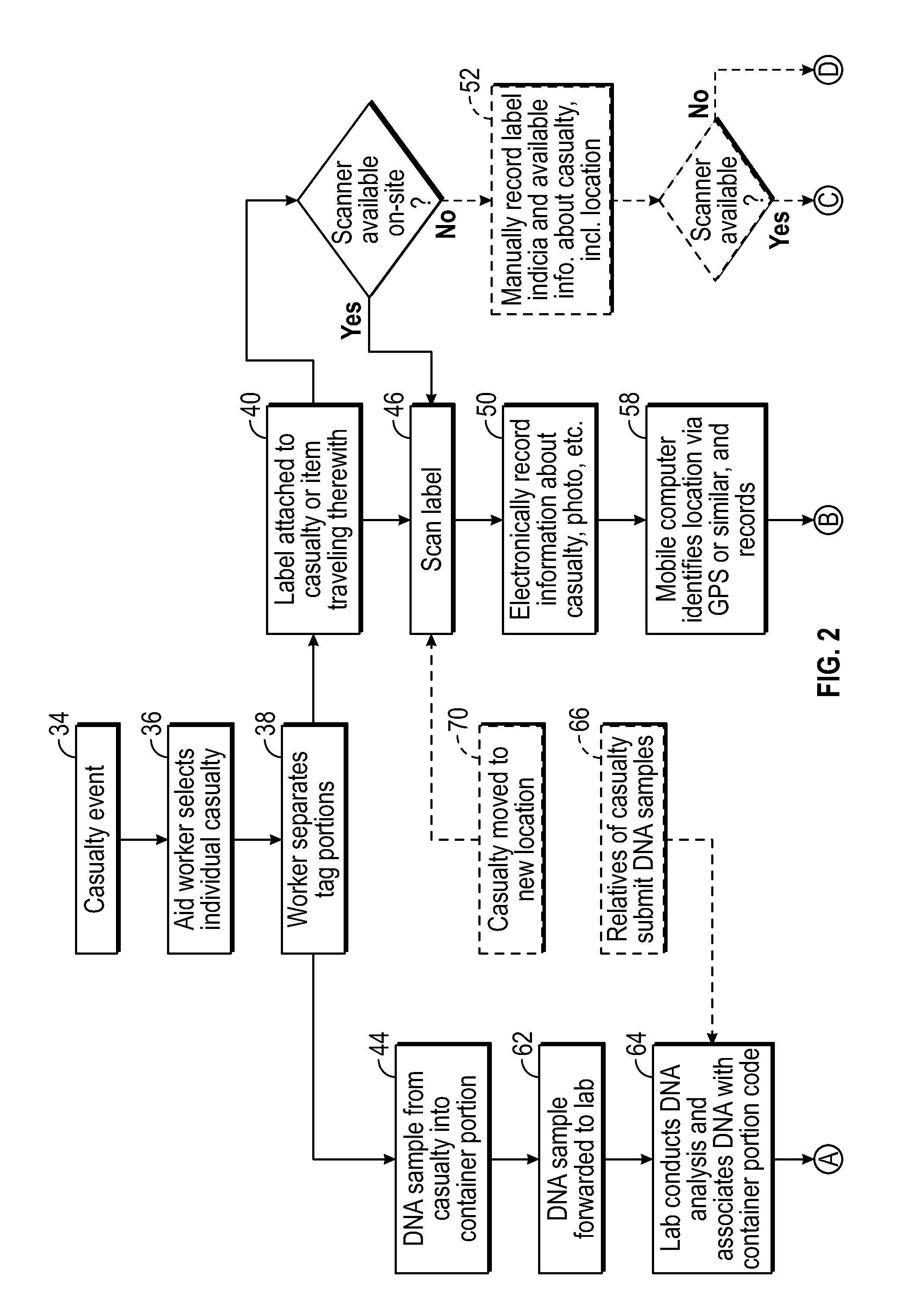Body tracking and identification system and method
a body tracking and identification system technology, applied in the field of computer-implemented identification and location tracking systems and methods, can solve the problems of difficult or impossible subsequent positive identification of individual victims, uncertain surviving loved ones, etc., and achieve the effect of quick processing of victims and resistance to deterioration
- Summary
- Abstract
- Description
- Claims
- Application Information
AI Technical Summary
Benefits of technology
Problems solved by technology
Method used
Image
Examples
Embodiment Construction
[0012]Referring now to the drawings and the illustrative embodiments depicted therein, a body tracking and identification system 10 (FIG. 1) and method (FIG. 2) facilitates the rapid processing of victims, even permitting the use of mass burials prior to positive identification of individual victims, in a manner that allows victims to later be positively identified and reunited or returned to family members or next of kin, even if the victim or victims have been moved multiple times after the original event that led to their death, injury, or illness. Body tracking and identification system 10 includes a two-part tag 14 including a tag portion 14a and a container portion 14b (FIGS. 1 and 3), a centralized computer database 16 in communication with one or more computers 18, and a handheld computer 20, such as a “smart phone” device, that is carried and used by an aid worker 22. System 10 further utilizes a laboratory 24 for conducting DNA analysis or other victim-identification metho...
PUM
 Login to View More
Login to View More Abstract
Description
Claims
Application Information
 Login to View More
Login to View More - R&D
- Intellectual Property
- Life Sciences
- Materials
- Tech Scout
- Unparalleled Data Quality
- Higher Quality Content
- 60% Fewer Hallucinations
Browse by: Latest US Patents, China's latest patents, Technical Efficacy Thesaurus, Application Domain, Technology Topic, Popular Technical Reports.
© 2025 PatSnap. All rights reserved.Legal|Privacy policy|Modern Slavery Act Transparency Statement|Sitemap|About US| Contact US: help@patsnap.com



